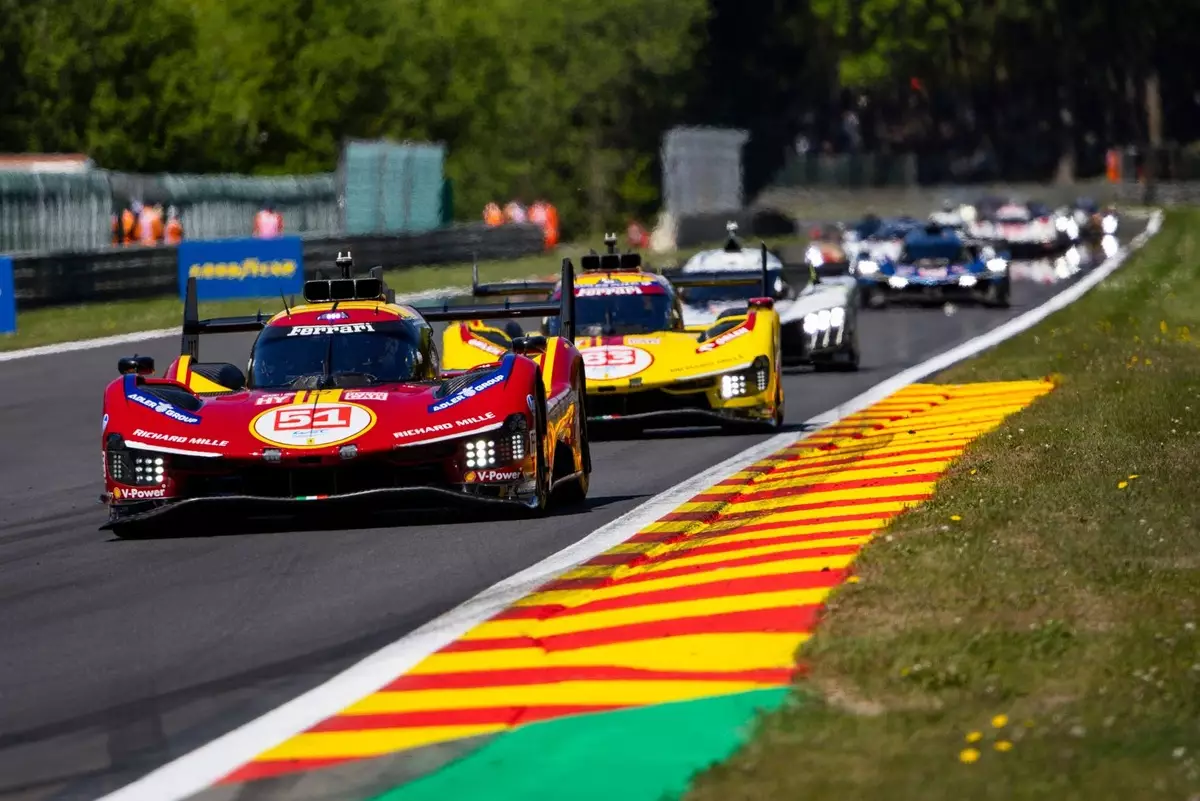In the high-octane world of endurance racing, strategies often define the outcome of events. The recent Spa 6 Hours showcased this vividly as Ferrari claimed victory with an impressive show of skill and teamwork from their driver trio: James Calado, Antonio Giovinazzi, and Alessandro Pier Guidi. Their 499P Le Mans Hypercar crossed the finish line just four seconds ahead of the sister car, brilliantly maneuvered through the challenging course by Nicklas Nielsen, Miguel Molina, and Antonio Fuoco. Meanwhile, a formidable Alpine A424 LMDh team, comprising Frédéric Makowiecki, Jules Gounon, and Mick Schumacher, snagged third place, merely a second behind the runners-up.
Ferrari’s dominance was evident in qualifying, as they secured the top three positions in Hyperpole. However, the race unfolded as a testament to the unpredictability of motorsport; despite their qualifying success, the race performance ignited fierce competition amongst Alpine, BMW, and Peugeot. The stakes were high, and both the teams and drivers were pushed to their limits, transforming what many anticipated to be a straightforward Ferrari exhibition into a gripping contest teeming with intrigue.
The Pivotal Safety Cars
A turning point in the race came with the deployment of two safety cars. After navigating many laps under racing conditions, the safety cars provided a level of uncertainty and opportunity that could change the complexion of the race. With just under two hours remaining, strategic decisions became crucial. After the second safety car, the two factory Ferraris—a symbolic representation of Italian engineering excellence—pitted strategically, which allowed Pier Guidi in the #51 car to chip away at the lead of the #50 car being driven by Nielsen.
What ensued was a game of cat and mouse. Pier Guidi found himself in a situation where he could capitalize on the pit strategies while Nielsen, who was trying to maintain fuel efficiency, found himself slowed by competitive traffic. This exemplified how endurance racing is not solely about speed but often about how well a team can pivot and adapt to the unfolding race dynamics.
A Clash of Titans
The final stretch of the race became increasingly critical. As the closing lap approached, Pier Guidi had an 11-second lead over his teammate, due, in part, to his aggressive driving and strategic timing of pit stops. However, the race was not void of setbacks. The Alpine team, which had been in contention for a podium finish, suffered a setback due to a slow puncture, causing them to fall behind and undermining their efforts to maintain competitive lap times.
BMW’s #20 entry, led by René Rast and Robin Frijns, was in the lead but succumbed to a brake problem that resulted in its unfortunate retirement. Similarly, Peugeot’s hopes for glory were dashed when Malthe Jakobsen collided with Frijns, leaving their best-placed car out of luck. These incidents underscored the unpredictable nature of racing, where fortunes can change in an eye blink, even for the most efficient teams.
Reflections on Performance and Potential
Despite the ups and downs, Toyota showcased a reliable performance, finishing fourth amidst the fray. Driven by Brendon Hartley, Ryo Hirakawa, and Sébastien Buemi, they demonstrated not just competitive speed but also resilience in a race marked by challenges. The Jota Cadillacs rounded off the top half of the pack, showing commendable strength among fierce contenders.
In this race where every decision and pit stop echoed with consequence, it became apparent that survival of the fittest was not merely a figurative expression but a tangible reality. Each team had to navigate through a mix of brilliant driving, strategic foresight, fortuitous timing with safety cars, and occasional misfortune. The Spa 6 Hours served as a reminder that racing is an art form filled with the uncertainties of competition and the thrilling chase for victory; and in this race, Ferrari painted a masterstroke that will be remembered for years to come.

